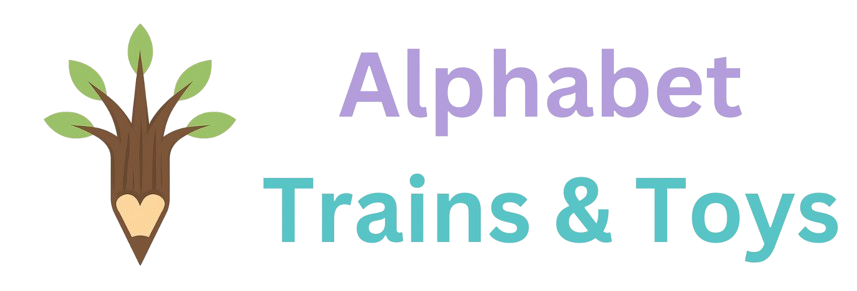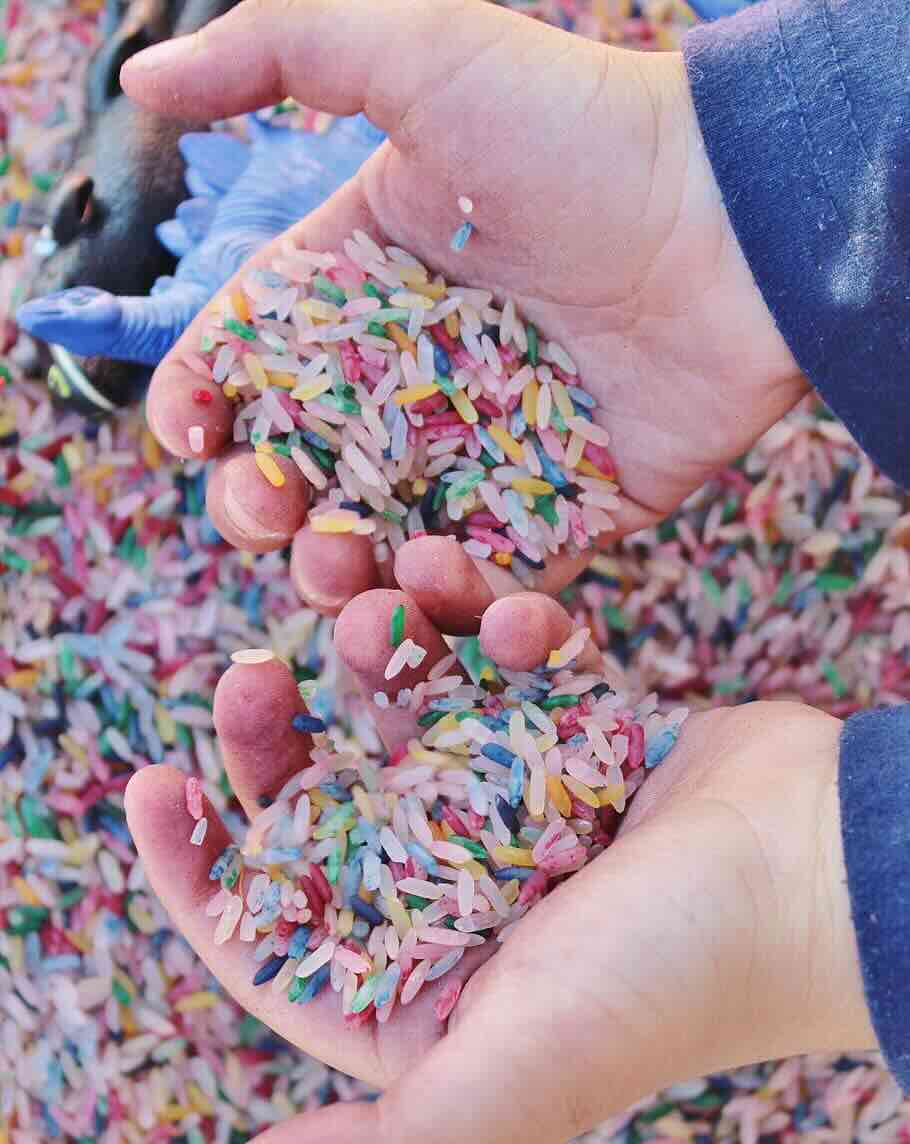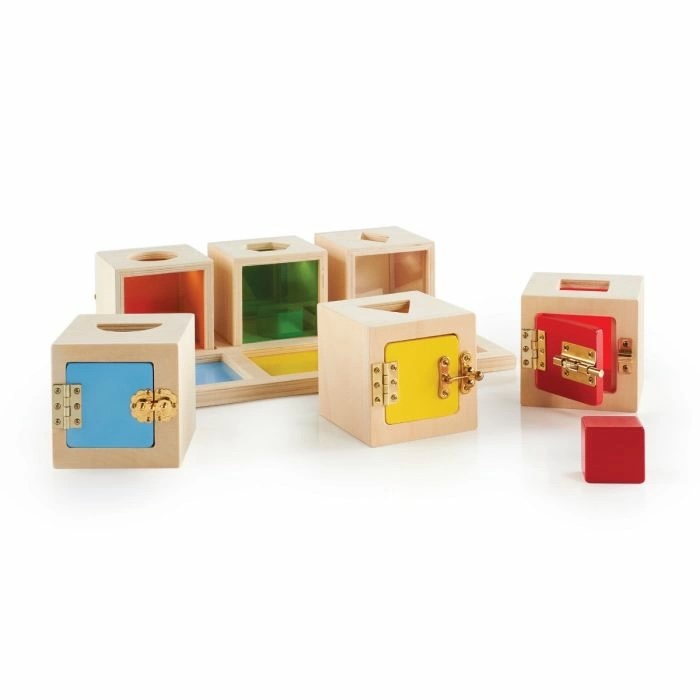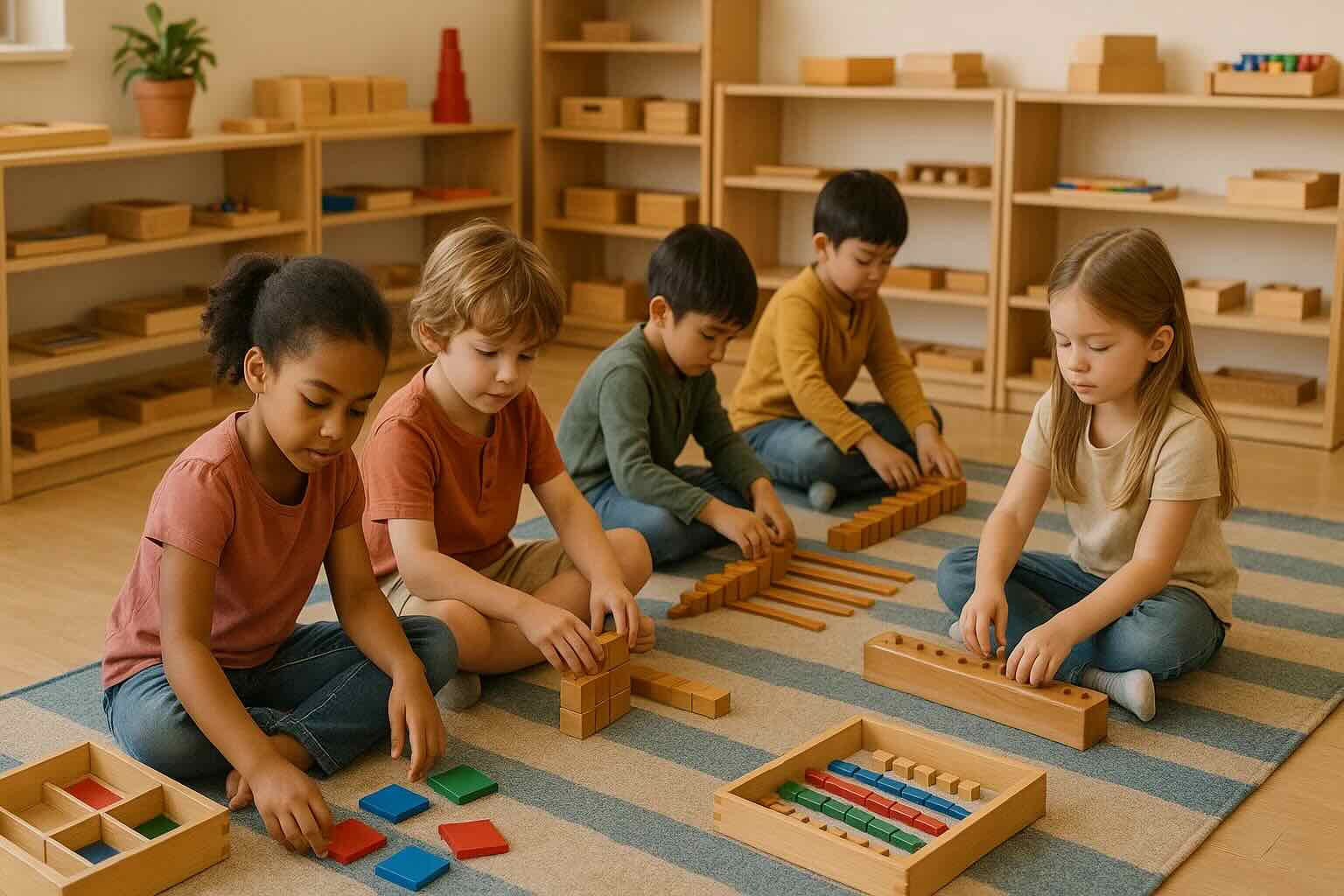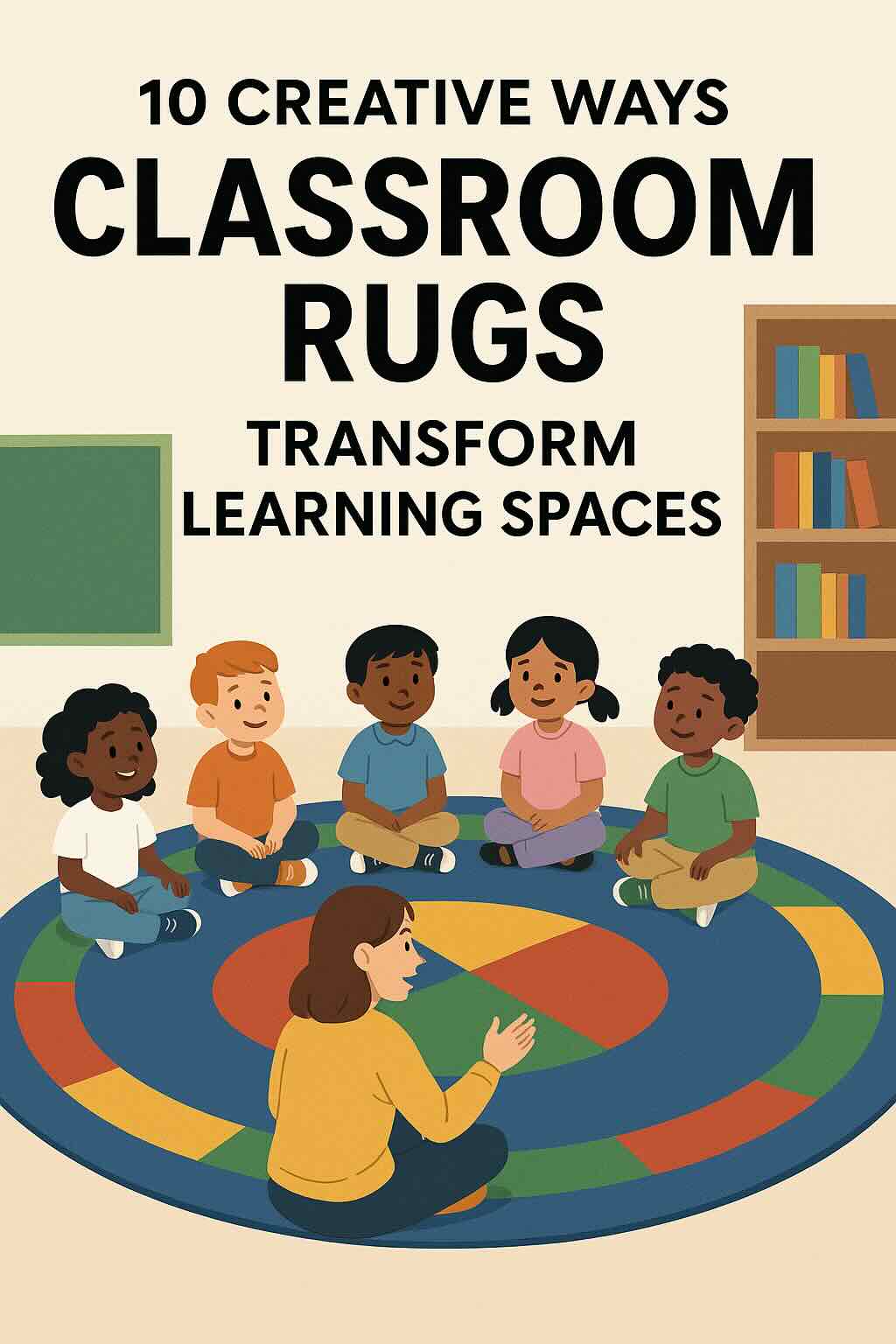Building Strength, Coordination & Independence Through Purposeful Play
Fine motor skills are the foundation of independence. From buttoning a coat to holding a pencil, these small muscle movements shape a child's ability to navigate daily life with confidence. Aligned with Montessori principles, fine motor activities offer children meaningful, hands-on experiences that develop hand strength, finger dexterity, hand-eye coordination, and bilateral coordination.
The National Institute of Health maintains that fine motor development is essential for self-care, play, and learning readiness - making these activities crucial for early childhood development.
This collection of 50 Montessori-inspired fine motor activities is designed for children ages 18 months to 6 years. Each activity uses simple materials, clear instructions, and connects to real-world skills. Whether you're a parent, teacher, or caregiver, these activities support purposeful development while respecting the child's natural desire to explore and master new skills.
Looking for activities to balance fine motor work? Check out our 51 Montessori Dance Games and 30 Gross Motor Activities for whole-body movement.
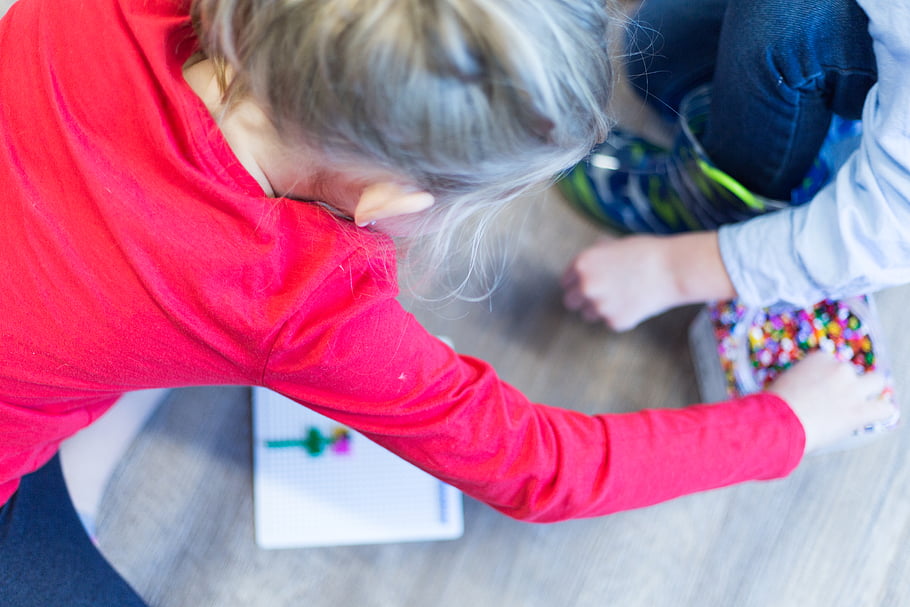
🎯 Find Your Perfect Fine Motor Activities
Answer these quick questions to get personalized activity recommendations based on your child's needs and your available materials!
1. What skill would you like to focus on?
2. What's your child's age?
3. What materials do you have available?
Your Recommended Activities:
🤞 Pincer Grasp & Picking Activities
1. Pom Pom Transfer – Montessori Fine Motor Activity
Quick Answer: Move pom poms from one bowl to another to build pincer grasp, control, and focus.
Materials:
Small pom poms, two bowls, optional: child-safe tweezers or tongs
Instructions:
Place pom poms in one bowl. Show your child how to pick up each pom pom using their thumb and forefinger (or tweezers) and transfer them one at a time to the empty bowl. Start with fingers only, then introduce tweezers as skill develops.
Benefits:
Develops pincer grasp, concentration, hand-eye coordination, and one-to-one correspondence.
💡 Montessori Tip: Sort by color while transferring for added challenge.
2. Clothespin Drop – Grip Strength & Precision
Quick Answer: Squeeze clothespins and drop into a container to strengthen fingers for pencil grip.
Materials:
Wooden clothespins, narrow-mouth container
Instructions:
Squeeze open a clothespin and drop it into the container, one at a time.
Benefits:
Strengthens thumb, finger, and hand muscles; improves precision and focus.
3. Rice or Bean Scooping – Bilateral Coordination
Quick Answer: Hold and scoop with opposite hands to build stability and control.
Materials:
Dry rice or beans, two bowls, small scoop or spoon
Instructions:
Hold one bowl steady with one hand while scooping with the other, then pour into the second bowl.
Benefits:
Develops bilateral coordination, wrist control, concentration, and practical life skills.
⚠️ Watch Out: Supervise closely with small items; use larger materials for children who mouth objects.
4. Sticker Peeling – Pincer Control
Quick Answer: Peel and place stickers to refine finger strength and accuracy.
Materials:
Stickers, paper
Instructions:
Pinch and peel stickers, then place on paper.
Benefits:
Refines pincer grasp, finger strength, precision, and focus.
5. Coin Slot Bank – Aim & Hand-Eye Accuracy
Quick Answer: Insert coins through a slot to practice targeting and controlled release.
Materials:
Container with slot, large coins or chips
Instructions:
Insert coins carefully through the slot.
Benefits:
Aims/accuracy, spatial awareness, pincer control.
6. Berry Basket Weaving – Precision & Patterning
Quick Answer: Weave yarn through basket holes to train careful finger movements.
Materials:
Plastic berry basket, yarn/ribbon strips
Instructions:
Weave in and out through holes.
Benefits:
Precision, bilateral coordination, concentration, patterning.
7. Eyedropper Water Transfer – Grip Power & Control
Quick Answer: Squeeze, draw, and release droplets to build hand strength and control.
Materials:
Eyedropper, bowls, colored water
Instructions:
Squeeze bulb to draw and release water, transferring drop by drop.
Benefits:
Hand strength, pincer use, concentration and control.
🎓 Montessori Connection: Classic Practical Life work introducing absorption, volume, cause-and-effect.
8. Tweezers & Ice Cube Tray Sorting – Targeted Pincer Work
Quick Answer: Use tweezers to place small items into compartments for focused precision practice.
Materials:
Tweezers, ice cube tray, small objects
Instructions:
Pick up items with tweezers and place into compartments.
Benefits:
Pincer strength, hand-eye coordination, sorting.
9. Cotton Ball Cloud Craft – Gentle Pincer & Spatial Sense
Quick Answer: Place cotton balls inside an outline to practice gentle grasp and placement.
Materials:
Cotton balls, paper, glue
Instructions:
Fill a drawn cloud outline with glued cotton balls.
Benefits:
Pincer refinement, spatial awareness, creativity.
10. Nut & Bolt Board – Two-Handed Coordination
Quick Answer: Stabilize with one hand and twist with the other to build bilateral coordination.
Materials:
Large plastic nuts and bolts
Instructions:
Hold bolt steady with one hand, twist nut with the other.
Benefits:
Bilateral work, wrist rotation, strength, problem-solving.
Perfect for Fine Motor Practice!
Our Montessori Sorting Toys provide endless opportunities for pincer grasp practice, hand-eye coordination, and focused concentration.
Shop Sorting Toys🧵 Threading & Lacing Activities
11. Pasta Necklace Threading – Hand-Eye & Bilateral Use
Quick Answer: Thread pasta onto taped yarn to practice aiming and two-handed control.
Materials:
Large-hole pasta, yarn
Instructions:
Tape one yarn end and thread pasta; tie ends.
Benefits:
Hand-eye coordination, bilateral work, concentration, sensory feedback.
12. Button Snake – Buttoning Practice
Quick Answer: Connect felt pieces on a button to develop functional buttoning skills.
Materials:
Felt pieces with buttonholes, large buttons
Instructions:
Button pieces together to form a “snake.”
Benefits:
Buttoning skill, bilateral coordination, finger dexterity.
13. Bead Stringing – Progressive Precision
Quick Answer: Guide laces through beads, moving from large to small as control improves.
Materials:
Large beads, shoelace
Instructions:
Guide string through bead holes; progress to smaller beads.
Benefits:
Hand-eye, concentration, bilateral use, patterning.
14. Lacing Cards – Pre-Sewing Skills
Quick Answer: Lace around card edges to build steady, accurate threading.
Materials:
Cardboard shapes with holes, shoelaces
Instructions:
Lace around the perimeter; try themed cards.
Benefits:
Precision, hand-eye, bilateral skills; pre-sewing.
15. Cheerio Threading – Fun Edible Practice
Quick Answer: Thread cereal onto a pipe cleaner for irresistible, low-frustration practice.
Materials:
O-shaped cereal, pipe cleaner
Instructions:
Thread cereal onto pipe cleaner; eat when done if desired.
Benefits:
Hand-eye, pincer, immediate reward.
💡 Try This: Make color patterns for added challenge.
16. Straw & Pipe Cleaner Threading – Beginner Beading
Quick Answer: Use stiff pipe cleaners and straw “beads” for easier early threading.
Materials:
Straws (cut), pipe cleaners
Instructions:
Thread straw beads onto pipe cleaners; bend into shapes.
Benefits:
Hand-eye, bilateral skills, creativity.
17. Shoe Tying Practice Board – Sequencing & Bilateral Use
Quick Answer: Practice lacing first, then bow-tying as readiness grows.
Materials:
Old shoe or lacing board, shoelaces
Instructions:
Start with lacing; progress to bow-tying.
Benefits:
Bilateral coordination, sequencing, practical self-care.
18. Paper Plate Sewing – Intro to Stitching
Quick Answer: Sew through pre-punched holes to learn directionality and control.
Materials:
Paper plate with holes, plastic needle, yarn
Instructions:
Sew simple stitches through holes; make patterns.
Benefits:
Intro to sewing, hand-eye, bilateral work, patience.
19. Button Threading – Small-Hole Precision
Quick Answer: Thread ribbon through button holes to hone fine control.
Materials:
Large buttons, ribbon
Instructions:
Thread ribbon through button holes to make garlands.
Benefits:
Precision, hand-eye, concentration.
20. Nature Threading – Outdoor Finds
Quick Answer: Thread leaves/shells/acorns to combine motor practice with nature.
Materials:
Acorns/shells/leaves (with holes), string
Instructions:
Thread natural finds into garlands after a nature walk.
Benefits:
Fine motor + nature connection, creativity, sensory exploration.
🎓 Montessori Connection: Purposeful work with natural materials supports real-world skills.
🥛 Pouring & Spooning Activities
21. Water Pouring Practice – Two-Hand Control
Quick Answer: Pour between pitchers to steady wrists and time flow.
Materials:
Two small pitchers, tray, sponge
Instructions:
Pour slowly from one pitcher to the other; use tray to catch spills.
Benefits:
Bilateral control, wrist stability, concentration, practical mealtime skill.
22. Spooning Dry Materials – Rhythmic Transfer
Quick Answer: Spoon beans or rice one scoop at a time to train steadiness.
Materials:
Dry beans/rice/pasta; two bowls; spoon
Instructions:
Spoon material one scoop at a time to the empty bowl.
Benefits:
Bilateral control, wrist action, stamina, eating skills.
23. Funnel Pouring – Aim & Steadiness
Quick Answer: Hold a funnel steady while pouring to build accuracy and focus.
Materials:
Funnel, bottle, dry rice/beans or water
Instructions:
Hold funnel steady while pouring through it.
Benefits:
Accuracy, bilateral skills, concentration, intro to flow/science.
24. Tea Party Pouring – Practical Life Social Play
Quick Answer: Serve “tea” to practice real-world pouring in a playful context.
Materials:
Small teapot, cups, colored water
Instructions:
Pour and serve “guests.”
Benefits:
Pouring skill, social play, practical life confidence.
25. Scooping with Tongs – Grip & Precision
Quick Answer: Use tongs to pick and place objects, scaling size for difficulty.
Materials:
Tongs, pom poms/cotton balls, two bowls
Instructions:
Pick and transfer with tongs; reduce size as skill grows.
Benefits:
Finger/hand strength, precision, bilateral control.
26. Baster Water Transfer – Squeeze & Release Control
Quick Answer: Move water between bowls using a turkey baster to build grip power.
Materials:
Turkey baster, bowls, water
Instructions:
Squeeze/draw/release water between bowls.
Benefits:
Grip power, bilateral work, suction/pressure concept.
27. Measuring Cup Pouring – Volume Sense
Quick Answer: Pour and compare amounts to link fine motor with early math.
Materials:
Measuring cups, bin or bowl, rice or water
Instructions:
Practice pouring and comparing volumes.
Benefits:
Pouring skill, volume sense, sensory exploration.
28. Ice Cube Rescue – Slippery Targeting
Quick Answer: Scoop slick ice pieces to train timing and tool use.
Materials:
Ice cubes, warm water bowl, spoon/strainer
Instructions:
Fish slippery cubes into a second bowl.
Benefits:
Hand-eye control, problem solving, melting concept.
💡 Sensory Bonus: Freeze tiny toys inside for extra engagement.
29. Slotted Spoon Transfer – Scoop, Drain, Place
Quick Answer: Lift floating items and let water drain before transferring.
Materials:
Slotted spoon, floating items, water bowl
Instructions:
Scoop items, drain, transfer to dry bowl.
Benefits:
Patience, coordination, problem solving.
30. Graduated Pouring – Increasing Precision
Quick Answer: Pour from bigger to smaller containers to challenge control.
Materials:
Containers from large to small; rice/water
Instructions:
Pour from largest down to smallest with control.
Benefits:
Precision, size discrimination, self-correction.
Build Fine Motor Skills with Name Trains!
Personalized Name Trains build finger strength and letter recognition through hands-on linking and sequencing.
Explore Name Trains✂️ Cutting & Tearing Activities
31. Paper Tearing Collage – Pre-Scissor Strength
Quick Answer: Tear and glue paper bits to build grip strength before scissors.
Materials:
Mixed papers, glue, base sheet
Instructions:
Tear pieces and glue a collage.
Benefits:
Grip strength, bilateral control, pre-scissor skill.
32. Playdough Snipping – Safe Scissor Start
Quick Answer: Snip soft dough to practice opening/closing motions with less frustration.
Materials:
Child-safe scissors, playdough “snakes”
Instructions:
Snip dough into pieces.
Benefits:
Strength + scissor control without paper frustration.
⚠️ Safety: Use rounded-tip child scissors and supervise.
33. Fringe Cutting – Stay to the Line
Quick Answer: Cut along guides to create fringe and train accuracy.
Materials:
Strip with guide lines; scissors
Instructions:
Cut to the line to create fringe.
Benefits:
Scissor control, bilateral coordination, precision.
34. Straight Line Cutting – Accuracy Builder
Quick Answer: Practice cutting thick straight lines and narrow as skill grows.
Materials:
Paper with thick straight lines; scissors
Instructions:
Cut along lines; narrow as skill grows.
Benefits:
Hand-eye, bilateral control, accuracy.
35. Shape Cutting – From Large to Small
Quick Answer: Cut big simple shapes first, then smaller and complex ones.
Materials:
Paper with circles/squares/triangles; scissors
Instructions:
Cut large shapes first, then smaller/complex.
Benefits:
Advanced scissor control, precision, shape recognition.
36. Magazine Picture Cutting – Purposeful Practice
Quick Answer: Cut out pictures for sorting or collages to add real purpose.
Materials:
Magazines, scissors, glue
Instructions:
Cut pictures to collage or sort.
Benefits:
Cutting skill, decision-making, categorization, creativity.
37. Straw Cutting – Satisfying Feedback
Quick Answer: Cut straws into “beads” for strong sensory and resistance feedback.
Materials:
Straws, scissors, container
Instructions:
Cut straws into small “beads.”
Benefits:
Strength, scissor control, sensory feedback.
38. Coupon Cutting – Real-World Rectangles
Quick Answer: Cut along printed borders to practice neat, straight cuts with purpose.
Materials:
Coupon pages, scissors
Instructions:
Cut along box borders for neat rectangles.
Benefits:
Precision, real-life purpose, contribution.
🎓 Montessori: Purposeful family contribution increases engagement.
39. Tissue Paper Cutting Mosaic – Gentle Control
Quick Answer: Cut delicate tissue into shapes to practice light, careful handling.
Materials:
Tissue paper, scissors, glue, base sheet
Instructions:
Cut small squares/shapes and glue a mosaic.
Benefits:
Gentle control, precision, color/design choices.
40. Spiral Cutting Challenge – Advanced Tracking
Quick Answer: Follow a spiral line to build continuous control and focus.
Materials:
Paper circles with spiral lines; scissors
Instructions:
Cut along the spiral to make a spring shape.
Benefits:
Advanced control, concentration, spatial awareness.
🧱 Building & Manipulating Activities
41. Playdough Creations – Squeeze, Roll, Pinch
Quick Answer: Shape dough with hands to build strength and tactile awareness.
Materials:
Playdough
Instructions:
Squeeze, roll, pinch; make snakes/balls/pancakes.
Benefits:
Strength, bilateral coordination, creativity, sensory input.
42. Toothpick Constructions – Tiny Engineering
Quick Answer: Build with toothpicks and connectors to train precise placement.
Materials:
Toothpicks, marshmallows or dough
Instructions:
Build 3D shapes by inserting toothpicks.
Benefits:
Precision, spatial reasoning, bilateral control, problem-solving.
43. Pegboard Patterns – Pincer with Patterns
Quick Answer: Place pegs in holes to strengthen pincer grasp and pattern recognition.
Materials:
Pegboard and pegs
Instructions:
Place pegs to form designs or copy pattern cards.
Benefits:
Pincer strength, patterning, hand-eye, spatial awareness.
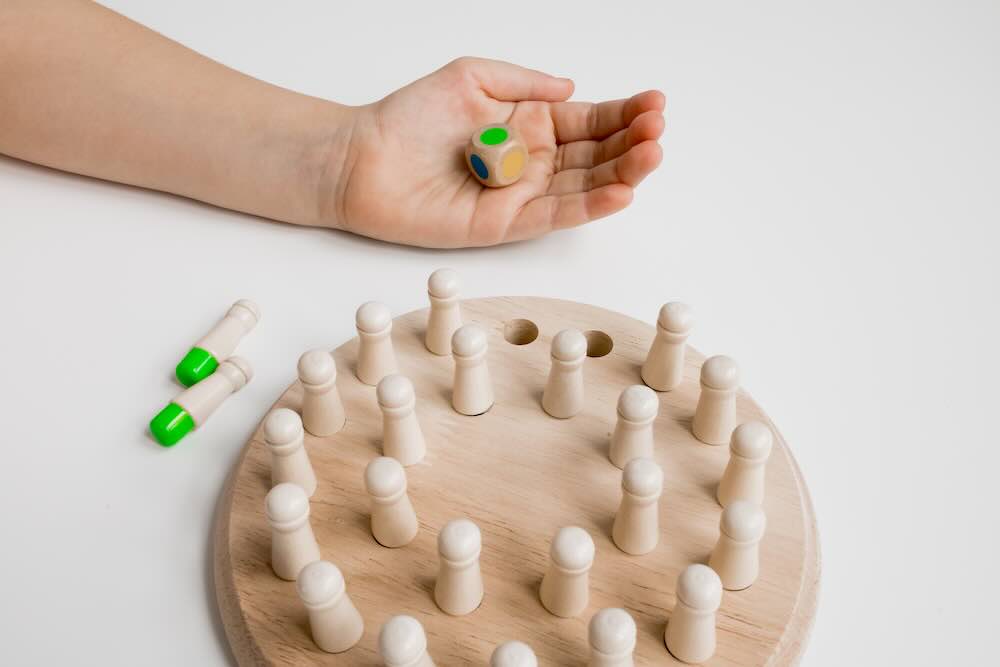
44. Q-tip Painting – Dot Control
Quick Answer: Dab paint with cotton swabs to refine tip control and placement.
Materials:
Q-tips, paint, paper
Instructions:
Dab dots or fill outlines with tip of Q-tip.
Benefits:
Pincer control, hand-eye coordination, art expression.
45. Building with Blocks – Stack & Connect
Quick Answer: Build structures to practice bilateral use, balance, and planning.
Materials:
Wood blocks/LEGO/magnetic tiles
Instructions:
Stack, connect, and build structures.
Benefits:
Bilateral control, spatial reasoning, problem-solving, strength.
46. Puzzle Building – Rotate & Fit
Quick Answer: Turn and place pieces to match outlines and grow focus.
Materials:
Age-appropriate puzzles
Instructions:
Rotate and fit pieces; increase piece count gradually.
Benefits:
Hand-eye, spatial awareness, problem-solving, focus.
47. Clothespin Clip Board – Pinch Power
Quick Answer: Clip pins around edges to build grip for future pencil control.
Materials:
Cardboard shapes, clothespins
Instructions:
Clip pins around edges; add color matching if desired.
Benefits:
Grip strength for pencil use, hand-eye, color recognition.
48. Opening & Closing Containers – Everyday Independence
Quick Answer: Practice different lids to build wrist rotation and two-hand use.
Materials:
Assorted containers with different lids; small objects inside
Instructions:
Open to retrieve, then close again; repeat with different lids.
Benefits:
Bilateral coordination, wrist rotation, problem-solving, independence.
49. Stamp Art – Press & Pattern
Quick Answer: Press stamps firmly to explore patterns and pressure control.
Materials:
Stamps and ink, or DIY sponge/veggie stamps
Instructions:
Press stamps firmly to make patterns/pictures.
Benefits:
Press strength, pressure control, patterning, creativity.
50. Finger Painting – Sensory & Strength
Quick Answer: Paint with fingers to strengthen hands and explore textures.
Materials:
Non-toxic finger paint, large paper, smock
Instructions:
Spread, dab, swirl; print with different fingers.
Benefits:
Finger strength and independence; rich sensory play; creativity.
💡 Sensory Extension: Try shaving cream, pudding, or yogurt for taste-safe play.
Why Fine Motor Skills Matter
Understood.org explains that fine motor skills impact everything from self-care to academic success - making these activities essential building blocks for lifelong independence.
Fine motor development supports:
- Self-Care Independence: Buttoning, zipping, tying shoes, using utensils, and grooming skills rely on refined hand movements.
- Academic Readiness: Pencil grip, scissor control, and strength prepare children for writing and tool use.
- Hand-Eye Coordination: Threading, pouring, and manipulating objects build visual-motor integration.
- Bilateral Coordination: Using both hands (one stabilizing, one working) supports tasks from tying shoes to instruments.
- Cognitive Development: Planning, sequencing, problem-solving, and concentration.
- Confidence & Self-Esteem: Mastering physical skills builds confidence and initiative.
- Sensory Processing: Handling varied textures supports sensory integration and body awareness.
Offer these activities regularly and allow repetition; independence, not perfection, is the goal.
Support Independence with Step Stools!
Personalized Step Stools help children reach sinks and counters for real-life practice.
Discover Step StoolsFrequently Asked Questions About Fine Motor Development
At what age should children start fine motor activities?
Fine motor development begins in infancy with grasping reflexes. Structured activities can begin around 18 months and increase in complexity through age 6+. Match tasks to ability and let children progress naturally.
How long should sessions last?
Follow the child. Toddlers: 5–10 minutes; older preschoolers: 20–30+ minutes if engaged. In Montessori, we allow uninterrupted work to build concentration.
What if my child gets frustrated?
Choose a simpler task and demonstrate clearly. Avoid over-helping—productive struggle is part of learning. Praise effort and persistence.
How do fine motor skills relate to handwriting?
Handwriting depends on strength, dexterity, bilateral coordination, and hand-eye control—best built through hands-on activities, not just more writing.
Can screen time affect development?
Excess screen time displaces hands-on manipulation. Digital taps don’t provide the resistance/sensory feedback of real objects. Prioritize physical play.
Do I need special Montessori materials?
Nice to have, not required. Household items work great; what matters is respectful presentation, clear demonstration, and independence.
How can I tell if my child is on track?
General guide: by 2—stack blocks/turn pages; by 3—use scissors/draw circles; by 4—draw simple figures/use utensils well; by 5–6—tie shoes/write letters. If concerned, consult a pediatrician or OT.
Creating a Fine Motor-Rich Environment
Don’t do all 50 in a week—integrate fine motor practice into daily life. Rotate a few activities on accessible shelves, involve children in cooking/cleaning, and provide art/building/practical opportunities.
In Montessori, the goal is independence, not perfection. Allow repetition, mistakes, and self-correction; that deep concentration you see is the root of lifelong learning.
Looking for more? Balance with our 51 Montessori Dance Games and 100 Montessori Indoor Activities.
Share Your Fine Motor Success!
Tell us which activities your child enjoys and any creative variations you’ve discovered to inspire other families and educators.
Explore Our Complete Montessori Toy Collection!
From sorting toys to name trains, our Montessori toys support fine motor development, cognition, and independent learning through purposeful play.
Discover All Montessori Toys